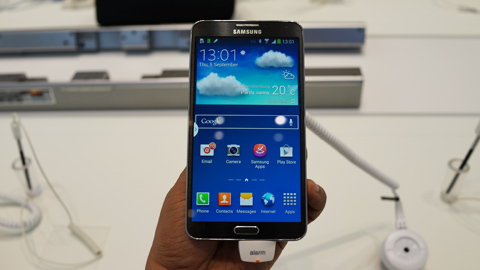Probably the most talked-about device that came out in this year’s Consumer Electronics Unlimited event (IFA) here in Berlin would be the Samsung Galaxy Gear, a companion smartwatch to the Galaxy Note 3.

Considering that the Galaxy Gear isn’t even near the first smartwatch to be introduced as a companion to the smartphone (Sony has had 2 generations of Live View smart watches before and Motorola has the MotoActv), the media and public has huge anticipation and expectation as to what Samsung is going to come up with.
Add to that the wide rumors about Apple getting into the smartwatch market and you get a very hyped-up and eager segment of the public.

Samsung’s Galaxy Gear is an attempt to make a smartwatch that both addresses form and function. This is evident with the use of stainless steel with the face of the watch and a metal band clasp. The strap is made up of some rubber-like polycarbonate mix that’s both tough yet still flexible.

The watch itself is actually an Adroid device, albeit heavily modified so that it shows only the basic features and compatible apps (due to limited screen size). The integrated chip (800MHz processor and 512MB RAM) allows it to power most of its built-in features, like the apps, the camera and the connectivity to an Android smartphone.
Samsung Galaxy Gear specs:
1.63-inch Super AMOLED display @ 320×320 pixels, 278ppi
800MHz Exynos single-core processor
512MB RAM
4GB internal storage
1.9MP BSI camera
720p recording @ 30fps
Bluetooth 4.0
2 microphone, noise canceling
315mAh Li-Ion battery
IP55 rating, water and dust resistant
Android Jellybean
Samsung claims that Galaxy Gear’s 315mAh battery will last for about 25 hours and we guess this is it’s peak performance since it will always be connected/paired with your phone all the time.

Ignore the silver metal clasp near the body of the watch here since it’s just part of the security cord.
Once paired with a Galaxy phone via Bluetooth (they skipped NFC), you’re also able to use the phone fucntions of your Galaxy smartphone — like checking messages, taking calls and making commands on S Voice. Sensors are built into the unit so even the gesture of your hand towards ears activate the “make a call or answer call” function.

The 1.9MP camera is positioned along the strap and facing outwards when you wear the watch. This orientation lets you take photos and videos fairly quick although we learned that video recording is maxed out at 10 seconds only.
The media files are stored into the device’s 4GB internal storage but can be easily transferred to the smartphone storage with a quick handshake or sync.
There are 3 contact pins at the bottom side for charging on the cradle. The watch has an IP55 rating for dust and water resistance but this does not cover submersion into water for any given length of time.

The watch will only be initially compatible with the Galaxy Note 3 and then the Galaxy Note 10.1 2014 Edition. With a firmware update, it will later on be compatible with the Galaxy S4 and the Galaxy Note 2 as well.
The Galaxy Gear will be available in 6 color variants — Jet Black, Mocha Gray, Wild Orange, Oatmeal Beige, Rose Gold, and Lime Green. Samsung will sell the Galaxy Gear for $299 and should be out by September 25.
The Galaxy Gear is a pretty decent start for a smartwatch considering this is just the first iteration for Samsung. There’s some hits and misses with this model — like higher battery life or better water resistance, but over-all we think it’s a good start that could help push innovation in this front.
The post Hands-on at IFA: Samsung Galaxy Gear appeared first on YugaTech | Philippines, Tech News & Reviews.

















